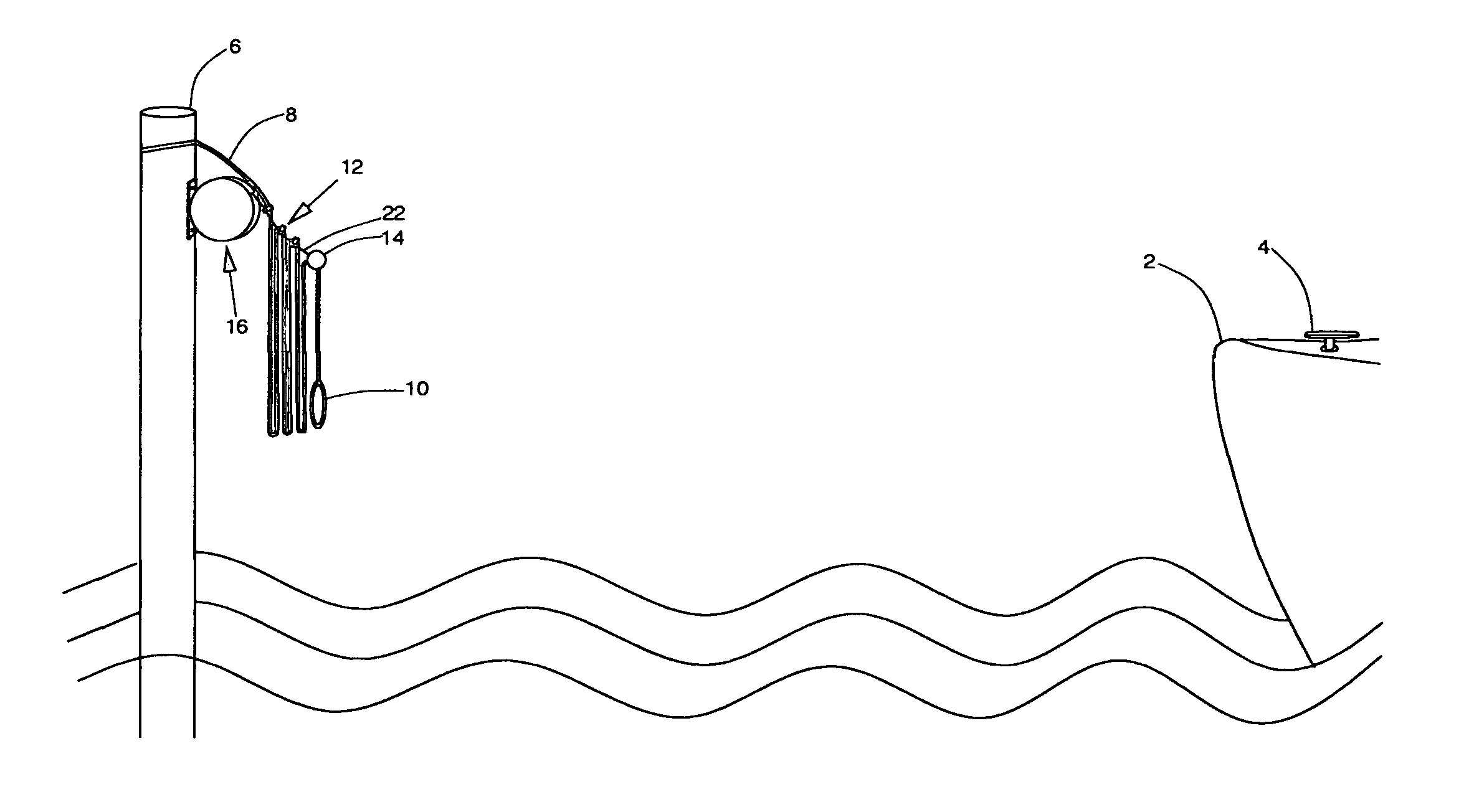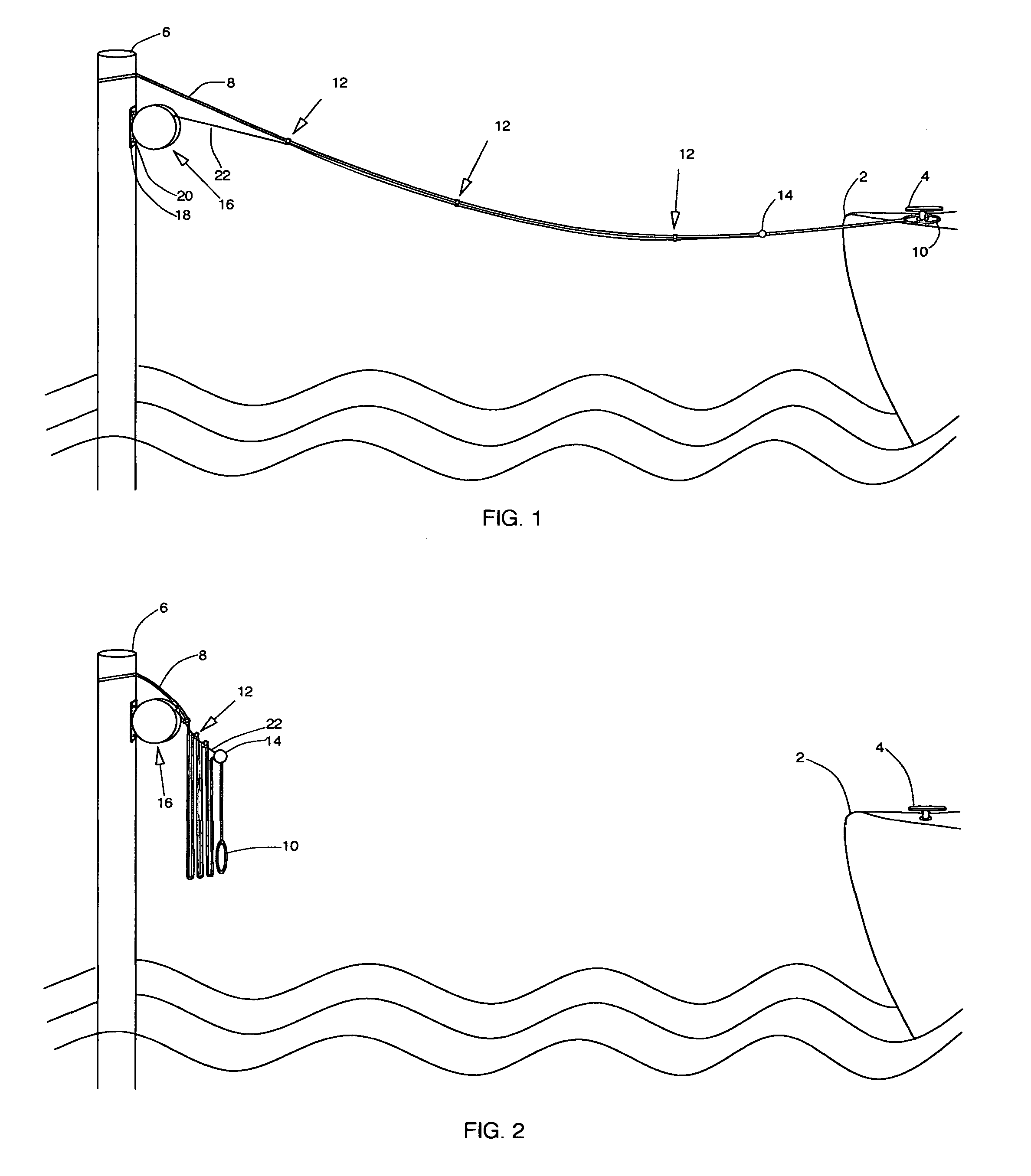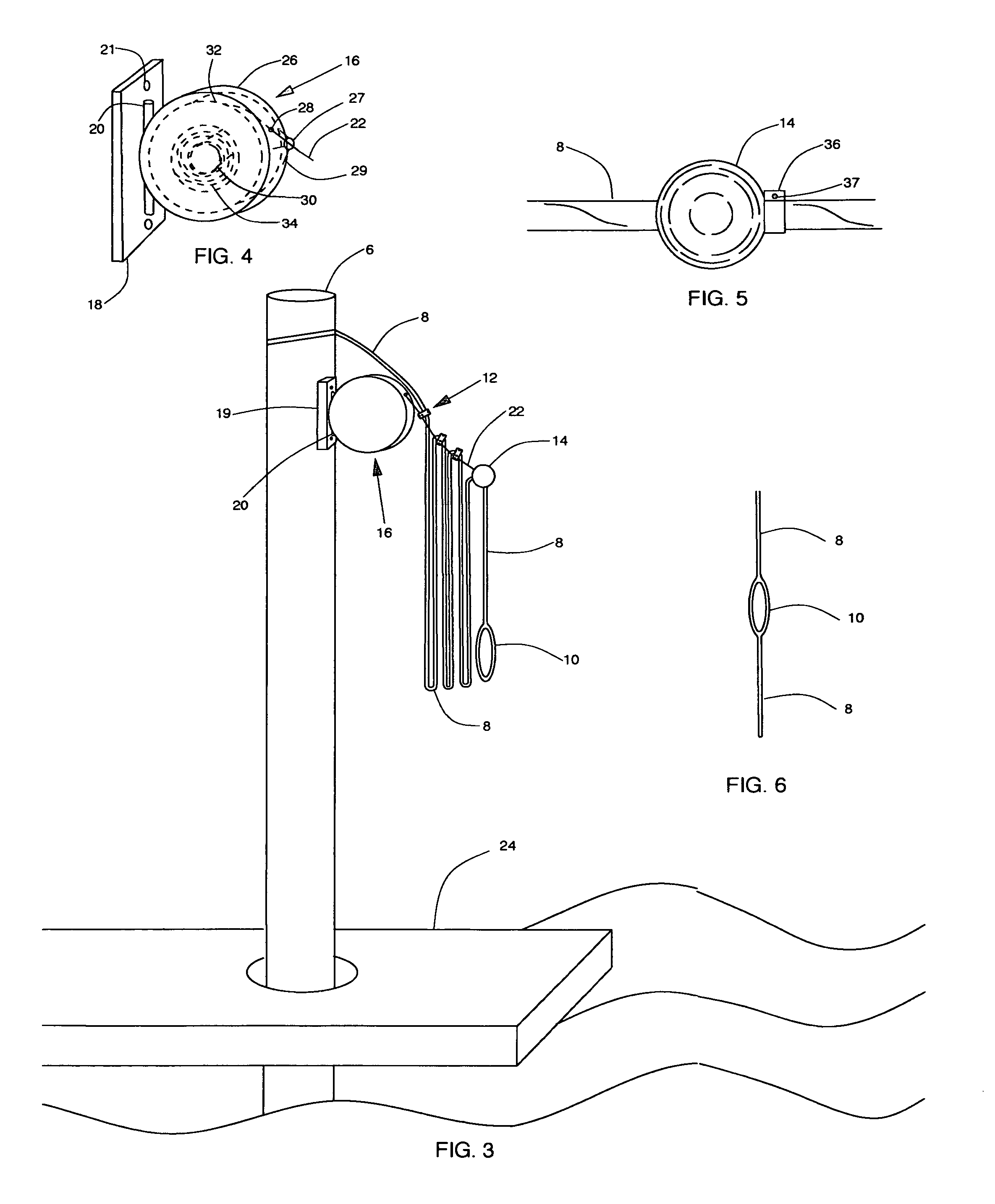One of the most frustrating and difficult aspects of operating a boat or vessel, particularly a sail or power-operated pleasure vessel, is the chore of docking and undocking the vessel from a slip or dock.
This operation generally requires that the docking line be manually coiled and carefully placed on the dock or on a cleat or hook on a piling by using a long pole known as a boating hook, which allows the usual distance between the vessel and the fixed
pile to be overcome, but which is stressful and difficult to operate, and which can cause
back strain.
Many such attempts fail and the docking line falls into the water, where it becomes a
hazard for the vessel upon retuning because it could snag its
propeller or
rudder; and quickly can become covered with marine organisms which discolor the docking line as well as cause it to be slimy or rough.
All of these operations require strength and take up valuable time just when the vessel is in danger of collision with the dock or slip if returning, or collision with pilings or other vessels when leaving.
It is safe to say that not only are accidents most likely to happen during these maneuvers, but because the operations are stressful because of the danger of damage to the vessel, or to neighboring vessels, it is unfortunately very common for tempers to fray and the pleasure of boating is greatly diminished.
While larger vessels are not free from the same operations and problems their professional
crew is there to
handle them, though the chores are hardly pleasant even then.
Other approaches to
safer docking are typified by J. A. Ross, U.S. Pat. No. 3,187,706, Jun. 8, 1965, which teaches only the setting up of a spring-actuated
cushioning line to soften any jarring upon re-docking, but still does not address the docking line retrieval, storage, and deployment.
Similarly D. Brushaber, U.S. Pat. No. 4,462,329, Jul. 31, 1984, teaches a means to hold a docking line and to stow it out of the vessel's way, but operations in wind or
waves would be difficult and could easily damage the vessel against the protruding
long arm.
Furthermore Brushaber does not teach using an automatic means to retract or extend the line, all of which are addressed by the present embodiments.
Also similar is W. M. Chaiko, U.S. Pat. No. 4,676,182, Jun. 30, 1987, who describes a means to position docking lines over the water so that they are more accessible to vessels desiring to dock, however it teaches the use of weights and mechanisms permanently outboard of the dock and substantially over the water, which
pose a real danger to the vessel which could easily strike them and incur damage.
Additionally Chaiko does not teach retracting the docking line and its weights or holders completely out of the way of a vessel, nor deploying it when needed without the aforementioned dangers, all of which are addressed by the present embodiments.
Furthermore Essig does not address the undocking maneuver at all which, were it to be addressed, would require another minimum of four manual operations to retrieve the retrieval line and end ring from the dock, detach the docking line from the vessel, attach the docking line to the retrieval end ring, and them go.
Thus not only does Essig not teach any device or method for undocking, his teaching for docking is cumbersome, requires a minimum of four annual operations, and overcomes few of the problems commonly incurred in such maneuvers, all of which are addressed and innovatively overcome by the present embodiments.
Specific examples in 119 / 794 and 119 / 795 include U.S. Pat. No. 5,377,626, U.S. Pat. No. 6,845,736, U.S. Pat. No. 4,470,558 and U.S. Pat. No. 5,813,816, all of which teach the particulars of spring-actuated mechanisms but do not address the problem of access to, easy deployment from, and easy retrieval of lines attached to a fixed structure used over the water, and which can only be accessed remotely rather than the continuous hands-on access of these animal control reel operated devices.
This simplicity, safety, and convenience of operation are not anticipated in prior art found, nor are they available in any product on the market.
 Login to View More
Login to View More  Login to View More
Login to View More 


